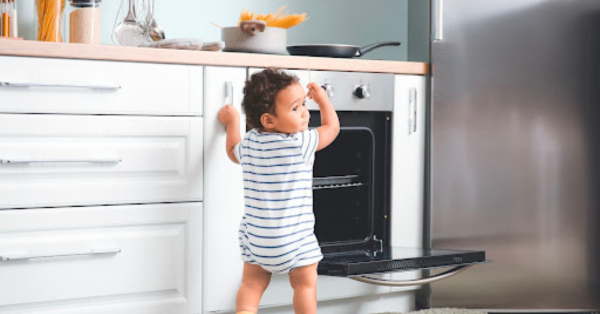It’s no secret that children get into… everything. This can make your home feel like it is fighting against you when it comes to the safety of your children. Childproofing is the act of making an environment safe for children by preventing access to dangerous locations such as medicine cabinets, household cleaners, electrical outlets, and more.
Childproofing Tips
Through childproofing and teaching your child about safety, you can help create a safe environment for your child to learn, grow, and play. Here at Wake Forest Pediatrics, child safety is our top priority. Continue reading to learn more about childproofing tips to help your child stay safe at home.
1. Keep Hazardous Material Out Of Reach
Packaging has come a long way, and even hazardous substances can look like a sweet treat to those who don’t know any better. Laundry detergents, bleaches, household cleaners, and other chemicals can be extremely dangerous if ingested by a child. Childproofing your home to keep these items out of reach is essential. You can do this by storing them in high cabinets or using handle safety locks on cabinets that are within reach of children.
2. Install Baby Gates
A key to childproofing your home is installing baby gates. They are often used to block off areas of the home that pose a risk to children, such as stairs, bathrooms, or the kitchen. Additionally, baby gates can be used in a way to create a safe environment for children while doing chores or completing household tasks.
3. Keep Windows And Doors Guarded
Due to their natural curiosity, children may attempt to open doors or windows, which can lead to them getting out or falling from a window. To prevent these incidents, childproofing your windows and doors is highly encouraged. To do this, you can install locks or safety latches that keep the windows and doors securely closed.
4. Secure Heavy Furniture And Appliances
When heavy furniture like bookshelves, dressers, and TV stands are not secured, they can pose a significant threat to children. If a child is to climb on these unsecured household items, there is a chance of them toppling over and causing harm. For this reason, it is important to use furniture straps and secure them firmly to the wall.
5. Keep Your Baby’s Crib Safe
A baby’s crib is a safe haven for them, and it is your job to ensure it stays that way. The CPSC offers these crib safety tips:
- Do not put pillows, comforters, or pillow-like bumper pads in the crib
- Ensure the hardwire is firmly secured
- Use only a fitted bottom sheet specifically made for crib use
- Ensure there are no missing crib slats
- Avoid positioners, bumpers, and inclined sleepers
In the first year of their life, ensure that you always put your baby on their back to sleep, as this is the most important way to help reduce the risk of sudden infant death syndrome (SIDS). If your baby rolls over onto their side or stomach during their slumber, gently position them onto their back.
6. Be Cautious Of Corners
As an adult, we may not think of the danger that low-level sharp corners pose, such as tables and lower-level cabinets. To safeguard against this hazard, try using baby-safe edge bumpers or corner protectors. Along with corners, it is also important to cover electrical outlets and secure electrical cords.
The board-certified pediatricians and staff at Wake Forest Pediatrics are dedicated to providing quality care to patients in Wake Forest and Knightdale. Our comprehensive approach focuses on teamwork and open communication with patients and parents. If you have more questions about childproofing your home, call our Wake Forest office at 919-556-4779 or our Knightdale office at 919-266-5059 to make an appointment.




